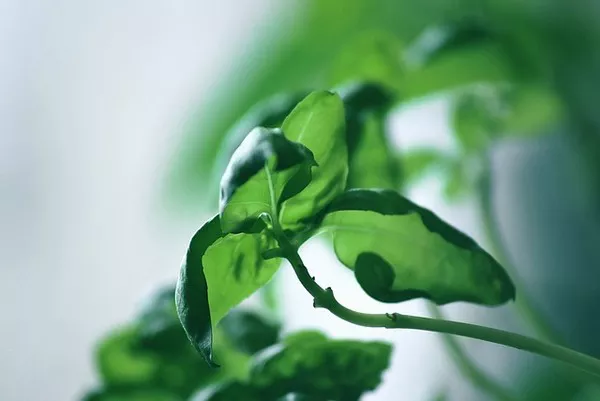Plants, the green wonders of our world, possess a remarkable ability that sets them apart from most other living organisms—they can produce their own food through a process known as photosynthesis. This intricate and finely tuned mechanism not only sustains the plant itself but also plays a crucial role in supporting life on Earth. In this article, we will delve into the fascinating world of photosynthesis, exploring the mechanisms behind it and the significance it holds in the grand tapestry of the natural world.
Understanding Photosynthesis:
At the core of a plant’s ability to make its own food lies the process of photosynthesis. This intricate biochemical process takes place in the chloroplasts, specialized structures found in plant cells. Chloroplasts contain a pigment called chlorophyll, which gives plants their characteristic green color and plays a pivotal role in capturing sunlight.
The process of photosynthesis can be summarized in a series of interconnected reactions. It begins with the absorption of sunlight by chlorophyll, which energizes electrons in the chlorophyll molecules. These energized electrons then embark on a journey through a complex chain of proteins and other molecules, known as the electron transport chain.
Simultaneously, water molecules are split in a process called photolysis, releasing oxygen as a byproduct. The liberated electrons from water molecules replace the ones lost by chlorophyll, completing the first stage of photosynthesis. The oxygen produced during this stage is essential for life on Earth, contributing to the planet’s atmospheric composition and supporting the respiration of other living organisms.
The next phase of photosynthesis involves the fixation of carbon dioxide from the atmosphere. The electrons, now energized from the absorbed sunlight, assist in the conversion of carbon dioxide into glucose through a series of chemical reactions. Glucose, a simple sugar, serves as the primary source of energy for the plant, fueling its growth, development, and reproduction.
Significance of Photosynthesis:
The ability of plants to make their own food through photosynthesis is of paramount importance to life on Earth. This process not only sustains the plant kingdom but also plays a critical role in maintaining the delicate balance of our planet’s ecosystems.
First and foremost, photosynthesis is the foundation of the food chain. Plants, as primary producers, serve as the base, converting solar energy into chemical energy stored in glucose. Herbivores then consume plants, and carnivores subsequently feed on herbivores. This hierarchical structure forms a complex web of interdependence, with each organism relying on the energy transferred from the lower trophic levels.
Moreover, the oxygen released during photosynthesis is indispensable for the survival of aerobic organisms. Through the process of respiration, animals, including humans, take in oxygen and release carbon dioxide. The reciprocal relationship between plants and animals, where plants produce oxygen and consume carbon dioxide while animals do the opposite, exemplifies the exquisite harmony of nature.
The environmental impact of photosynthesis extends beyond sustaining life. Plants play a crucial role in mitigating climate change by sequestering carbon dioxide. The carbon fixed during photosynthesis is stored in plant tissues, reducing the overall concentration of this greenhouse gas in the atmosphere. This contributes to the regulation of Earth’s climate and helps counteract the detrimental effects of excessive carbon dioxide emissions.
Photosynthesis in a Changing Climate:
While the process of photosynthesis is fundamental to the survival of plants and the ecosystems they support, it is not immune to the challenges posed by a changing climate. Factors such as elevated temperatures, altered precipitation patterns, and increased atmospheric carbon dioxide levels can impact the efficiency of photosynthesis.
Rising temperatures can lead to thermal stress on plants, affecting the enzymes involved in photosynthesis. Additionally, changes in precipitation patterns may influence water availability, potentially limiting the rate of photosynthesis in certain regions. Moreover, while increased carbon dioxide levels can initially stimulate photosynthesis, prolonged exposure may lead to acclimation, diminishing the potential benefits.
Scientists are actively researching how plants may adapt to these environmental changes and exploring strategies to enhance their resilience. Understanding the intricate details of photosynthesis provides valuable insights that can inform efforts to sustain and protect the plant kingdom in the face of a rapidly changing climate.
See Also 10 Effective Strategies for Bug-Free Gardens
Conclusion:
In conclusion, the ability of plants to make their own food through the intricate process of photosynthesis is a testament to the marvels of nature. This fundamental mechanism not only sustains the plant kingdom but also forms the cornerstone of Earth’s ecosystems, supporting life in all its diverse forms. As we navigate the challenges of a changing climate, it becomes imperative to appreciate and safeguard the delicate balance that photosynthesis maintains on our planet. Through ongoing research and conservation efforts, we can ensure the continued vitality of plants and, by extension, the health and prosperity of our global ecosystem.


